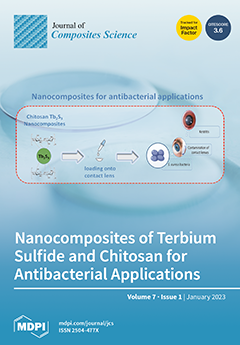Herein, the vacuum arc-melting process is applied to incorporate various amounts of Ti and C into SUS304 austenitic stainless steel based on the high-entropy alloy concept to obtain wear- and corrosion-resistant alloys with in situ carbide reinforcements. Five compositions containing the equivalent of 5, 10, 15, 20, and 25 volume percentages of TiC in SUS304 stainless steel, named A1, A2, A3, A4, and A5, respectively, were designed, melted, and solidified by the arc-melting method. Microstructural analyses, hardness measurements, immersion tests in four corrosive solutions, electrochemical measurements in a 3.5 wt % NaCl
(aq) solution, and tribological tests were conducted to determine the properties and explain the relevant mechanisms. A1 exhibited a eutectic structure between FCC dendrites, while A2, A3, A4, and A5 possessed proeutectic dendritic TiC, FCC dendrites enveloping the TiC dendrites, and a eutectic structure. A5 represents the optimal composition. Its hardness, wear resistance, and corrosion resistance are 2, 14, and 4 times higher than those of SUS304, respectively. Additionally, its wear resistance is 2.5 times that of high-chromium cast iron. Consequently, A5 could have a 2.5-fold longer lifetime in wear operation. Therefore, A5 could be potentially applied in corrosive and abrasive environments, such as rotary shafts, rotors, bearings, and structural parts in food, chemical, and optoelectronic industries.
Full article





